-
 Bitcoin
Bitcoin $106,754.6083
1.33% -
 Ethereum
Ethereum $2,625.8249
3.80% -
 Tether USDt
Tether USDt $1.0001
-0.03% -
 XRP
XRP $2.1891
1.67% -
 BNB
BNB $654.5220
0.66% -
 Solana
Solana $156.9428
7.28% -
 USDC
USDC $0.9998
0.00% -
 Dogecoin
Dogecoin $0.1780
1.14% -
 TRON
TRON $0.2706
-0.16% -
 Cardano
Cardano $0.6470
2.77% -
 Hyperliquid
Hyperliquid $44.6467
10.24% -
 Sui
Sui $3.1128
3.86% -
 Bitcoin Cash
Bitcoin Cash $455.7646
3.00% -
 Chainlink
Chainlink $13.6858
4.08% -
 UNUS SED LEO
UNUS SED LEO $9.2682
0.21% -
 Avalanche
Avalanche $19.7433
3.79% -
 Stellar
Stellar $0.2616
1.64% -
 Toncoin
Toncoin $3.0222
2.19% -
 Shiba Inu
Shiba Inu $0.0...01220
1.49% -
 Hedera
Hedera $0.1580
2.75% -
 Litecoin
Litecoin $87.4964
2.29% -
 Polkadot
Polkadot $3.8958
3.05% -
 Ethena USDe
Ethena USDe $1.0000
-0.04% -
 Monero
Monero $317.2263
0.26% -
 Bitget Token
Bitget Token $4.5985
1.68% -
 Dai
Dai $0.9999
0.00% -
 Pepe
Pepe $0.0...01140
2.44% -
 Uniswap
Uniswap $7.6065
5.29% -
 Pi
Pi $0.6042
-2.00% -
 Aave
Aave $289.6343
6.02%
What is the signal of Vol's continuous large-volume stagflation and sideways trading? Is it about to change?
Vol's continuous large-volume stagflation and sideways trading can be exploited by traders using range-bound strategies, despite the challenge of high volume without price movement.
Jun 14, 2025 at 09:49 pm
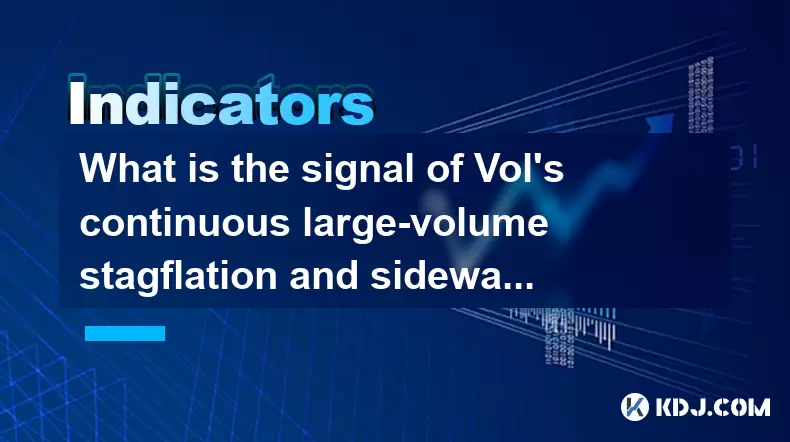
In the world of cryptocurrency, understanding market signals and indicators is crucial for traders and investors looking to make informed decisions. One such signal that has been garnering attention is the Vol's continuous large-volume stagflation and sideways trading. This phenomenon refers to a situation where a cryptocurrency experiences a high trading volume but fails to show significant price movement, remaining in a relatively stagnant or sideways trend. This article will delve into what this signal means, why it occurs, and whether it is about to change.
Understanding Vol's Continuous Large-Volume Stagflation and Sideways Trading
Vol's continuous large-volume stagflation and sideways trading is a market condition where a cryptocurrency sees a substantial amount of trading activity, yet the price remains within a narrow range. This can be confusing for traders because high volume usually indicates strong interest and potential price movement, but in this case, it does not lead to significant price changes.
This phenomenon can be attributed to several factors. One primary reason is the balance between buyers and sellers. When there is an equal number of buyers and sellers, the price tends to stay within a tight range because neither side has enough force to push the price significantly up or down. Another reason could be market manipulation, where large traders or 'whales' engage in high-volume trading to create the illusion of activity without intending to move the price.
The Impact on Traders and Investors
For traders and investors, Vol's continuous large-volume stagflation and sideways trading can be both a challenge and an opportunity. On one hand, it can be frustrating to see high volume without corresponding price movement, leading to indecision and potential losses if not managed properly. On the other hand, this situation can be exploited by those who use range-bound trading strategies, where they buy at the lower end of the range and sell at the higher end, profiting from the small price fluctuations.
Understanding this market condition is crucial for developing effective trading strategies. Traders need to be aware of the potential for false breakouts, where the price briefly moves outside the established range but quickly reverts back. This can lead to losses if traders enter positions based on these false signals.
Analyzing the Current Market Situation
To determine whether Vol's continuous large-volume stagflation and sideways trading is about to change, traders need to analyze several key indicators. One important indicator is the volume profile, which shows the volume traded at different price levels. If there is a significant increase in volume at the upper or lower end of the range, it could signal an impending breakout.
Another critical factor to consider is the order book, which provides insight into the current buy and sell orders. A shift in the order book, with more buy orders at higher prices or sell orders at lower prices, can indicate that a change is imminent. Additionally, traders should keep an eye on market sentiment, as shifts in sentiment can often precede significant price movements.
Tools and Techniques for Monitoring the Signal
To effectively monitor Vol's continuous large-volume stagflation and sideways trading, traders can use a variety of tools and techniques. Here are some steps to follow:
- Use technical analysis indicators: Tools like the Relative Strength Index (RSI), Moving Averages, and Bollinger Bands can help identify potential breakouts or confirm the continuation of the sideways trend.
- Monitor volume indicators: Volume indicators such as the On-Balance Volume (OBV) and Volume Weighted Average Price (VWAP) can provide insights into the strength of the current trend and potential shifts in volume distribution.
- Analyze candlestick patterns: Certain candlestick patterns, such as doji or spinning tops, can indicate indecision in the market and potential changes in the trend.
- Set up price alerts: Use trading platforms to set up alerts for specific price levels, helping you stay informed about potential breakouts or breakdowns.
By combining these tools and techniques, traders can gain a better understanding of the current market condition and make more informed trading decisions.
Case Studies of Vol's Continuous Large-Volume Stagflation and Sideways Trading
To illustrate Vol's continuous large-volume stagflation and sideways trading, let's look at a few case studies from the cryptocurrency market.
- Bitcoin in 2020: In the early months of 2020, Bitcoin experienced a period of high trading volume but remained within a tight range of $6,000 to $7,000. This was attributed to uncertainty in the global financial markets due to the COVID-19 pandemic. Eventually, Bitcoin broke out of this range and started a bullish trend.
- Ethereum in 2021: Ethereum saw a similar pattern in mid-2021, where it traded sideways between $2,000 and $2,500 despite high volume. This was due to a balance between bullish and bearish sentiments, with many investors waiting for a clear signal before making a move. Eventually, Ethereum broke out to the upside, leading to a significant price increase.
These case studies highlight how Vol's continuous large-volume stagflation and sideways trading can precede significant price movements, emphasizing the importance of monitoring this signal closely.
Strategies for Trading During Vol's Continuous Large-Volume Stagflation and Sideways Trading
When faced with Vol's continuous large-volume stagflation and sideways trading, traders can employ several strategies to navigate the market effectively. Here are some approaches to consider:
- Range trading: This involves buying at the lower end of the range and selling at the higher end. Traders can use technical indicators to identify these levels and set stop-loss orders to manage risk.
- Scalping: Scalping involves making quick trades to capitalize on small price movements within the range. This strategy requires a high level of attention and quick decision-making.
- Breakout trading: While more risky, breakout trading involves entering a position when the price breaks out of the established range. Traders need to confirm the breakout with volume and other indicators to reduce the risk of false breakouts.
Each of these strategies has its own set of risks and rewards, and traders should choose the one that aligns best with their trading style and risk tolerance.
Frequently Asked Questions
Q: How can I differentiate between a genuine breakout and a false breakout during Vol's continuous large-volume stagflation and sideways trading?
A: To differentiate between a genuine and a false breakout, look for confirmation from volume indicators. A genuine breakout is often accompanied by a significant increase in volume, indicating strong market interest. Additionally, monitor other technical indicators like the RSI and Moving Averages for confirmation. If the price quickly reverts back to the range after a breakout, it is likely a false breakout.
Q: What are the psychological factors that contribute to Vol's continuous large-volume stagflation and sideways trading?
A: Psychological factors such as fear, uncertainty, and greed can contribute to this market condition. When traders are uncertain about the market direction, they may engage in high-volume trading without committing to a significant price movement. Additionally, large traders may use high volume to create fear or greed among smaller traders, influencing their decisions without intending to move the price.
Q: Can Vol's continuous large-volume stagflation and sideways trading occur in other financial markets, or is it unique to cryptocurrencies?
A: While Vol's continuous large-volume stagflation and sideways trading is commonly observed in the cryptocurrency market, it can also occur in other financial markets such as stocks and forex. The underlying causes, such as a balance between buyers and sellers or market manipulation, are similar across different markets. However, the frequency and impact may vary due to differences in market structure and regulation.
Q: How can I use Vol's continuous large-volume stagflation and sideways trading to my advantage in long-term investing?
A: For long-term investors, Vol's continuous large-volume stagflation and sideways trading can be an opportunity to accumulate assets at a lower price within the range. By monitoring the market closely and using dollar-cost averaging, investors can buy more units of the cryptocurrency at different price points within the range, reducing the average cost per unit. This strategy can be particularly effective if the market eventually breaks out to the upside.
Disclaimer:info@kdj.com
The information provided is not trading advice. kdj.com does not assume any responsibility for any investments made based on the information provided in this article. Cryptocurrencies are highly volatile and it is highly recommended that you invest with caution after thorough research!
If you believe that the content used on this website infringes your copyright, please contact us immediately (info@kdj.com) and we will delete it promptly.
- 2025-W Uncirculated American Gold Eagle and Dr. Vera Rubin Quarter Mark New Products
- 2025-06-13 06:25:13
- Ruvi AI (RVU) Leverages Blockchain and Artificial Intelligence to Disrupt Marketing, Entertainment, and Finance
- 2025-06-13 07:05:12
- H100 Group AB Raises 101 Million SEK (Approximately $10.6 Million) to Bolster Bitcoin Reserves
- 2025-06-13 06:25:13
- Galaxy Digital CEO Mike Novogratz Says Bitcoin Will Replace Gold and Go to $1,000,000
- 2025-06-13 06:45:13
- Trust Wallet Token (TWT) Price Drops 5.7% as RWA Integration Plans Ignite Excitement
- 2025-06-13 06:45:13
- Ethereum (ETH) Is in the Second Phase of a Three-Stage Market Cycle
- 2025-06-13 07:25:13
Related knowledge
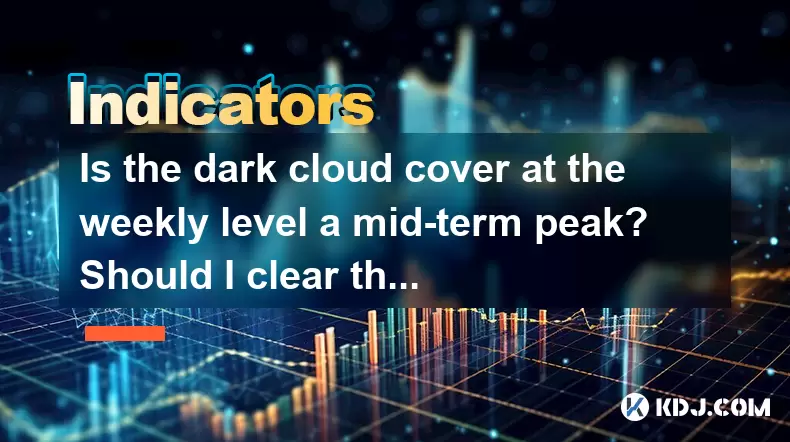
Is the dark cloud cover at the weekly level a mid-term peak? Should I clear the position?
Jun 17,2025 at 02:21pm
Understanding the Dark Cloud Cover PatternThe Dark Cloud Cover is a well-known candlestick pattern used by technical analysts to identify potential trend reversals from bullish to bearish. It typically forms at the end of an uptrend and consists of two candles: the first is a strong bullish (green) candle, followed by a bearish (red) candle that opens h...
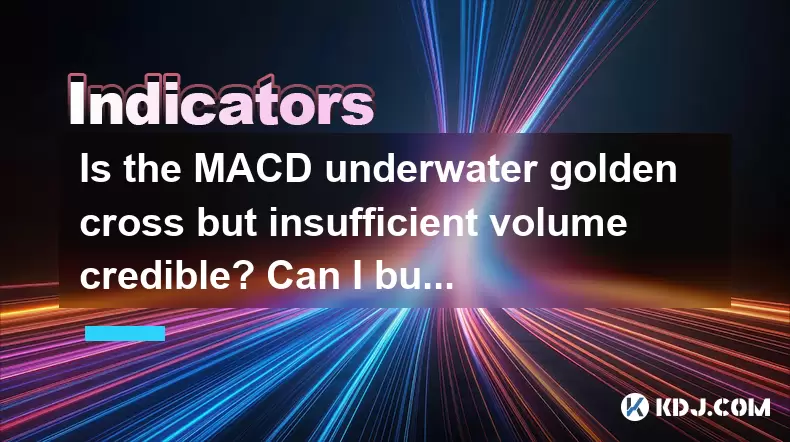
Is the MACD underwater golden cross but insufficient volume credible? Can I buy at the bottom?
Jun 17,2025 at 03:08pm
Understanding the MACD Underwater Golden CrossThe MACD underwater golden cross occurs when the MACD line crosses above the signal line below the zero line, signaling a potential reversal from a downtrend to an uptrend. This phenomenon is often interpreted by traders as a bullish signal, especially in cryptocurrency markets where momentum plays a signifi...
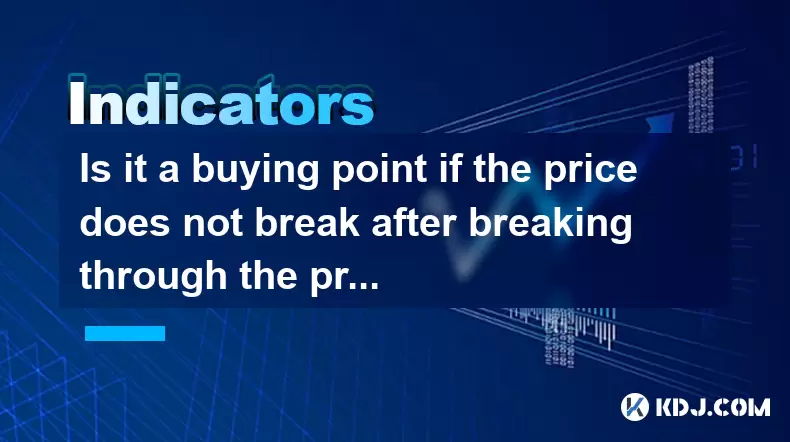
Is it a buying point if the price does not break after breaking through the previous high? How to confirm?
Jun 17,2025 at 01:22pm
Understanding Price Behavior After Breaking Previous HighsWhen analyzing cryptocurrency price charts, traders often look for breakouts as potential signals for new trends. A common question among traders is whether a non-breakdown after breaking through a previous high indicates a buying opportunity. To answer this, it's essential to understand the psyc...
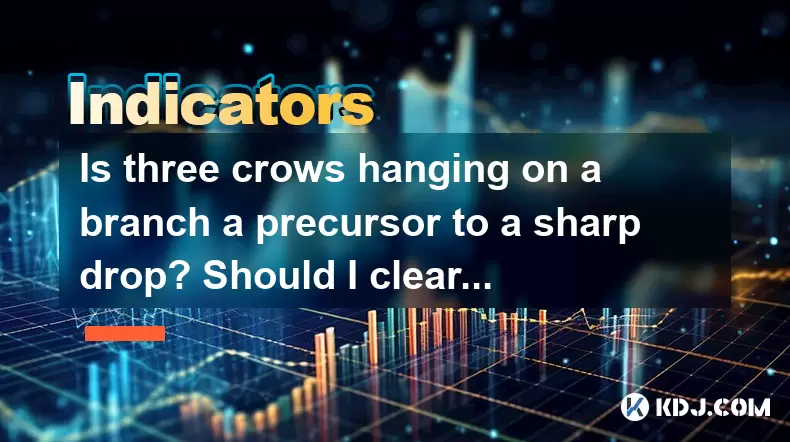
Is three crows hanging on a branch a precursor to a sharp drop? Should I clear my position?
Jun 17,2025 at 12:50pm
What Does 'Three Crows Hanging on a Branch' Mean in Crypto Trading?In technical analysis, the 'three crows hanging on a branch' is a candlestick pattern that often signals a potential reversal from an uptrend to a downtrend. This pattern typically appears after a period of rising prices and consists of three consecutive bearish (red) candles with progre...
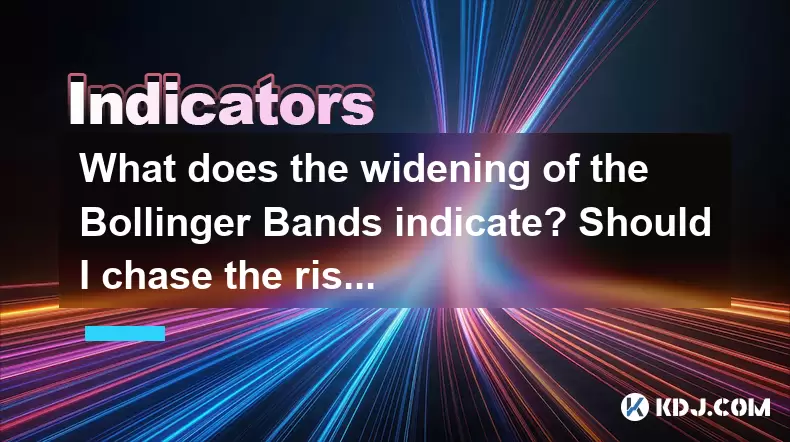
What does the widening of the Bollinger Bands indicate? Should I chase the rise or leave the market?
Jun 17,2025 at 02:28pm
Understanding Bollinger Bands and Their SignificanceBollinger Bands are a widely used technical analysis tool in cryptocurrency trading. They consist of a moving average (typically a 20-day simple moving average) with two standard deviation lines plotted above and below it. These bands dynamically adjust to price volatility, expanding when volatility in...
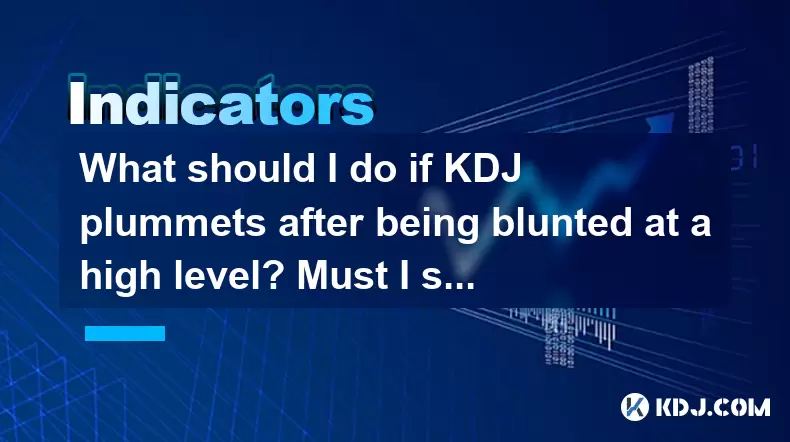
What should I do if KDJ plummets after being blunted at a high level? Must I stop loss?
Jun 17,2025 at 12:01pm
Understanding KDJ Indicator Dynamics in Cryptocurrency TradingThe KDJ indicator, also known as the stochastic oscillator, is a momentum-based tool used to identify overbought and oversold conditions in financial markets, including cryptocurrency. It consists of three lines: the %K line (fast stochastic), the %D line (slow stochastic), and the %J line (d...

Is the dark cloud cover at the weekly level a mid-term peak? Should I clear the position?
Jun 17,2025 at 02:21pm
Understanding the Dark Cloud Cover PatternThe Dark Cloud Cover is a well-known candlestick pattern used by technical analysts to identify potential trend reversals from bullish to bearish. It typically forms at the end of an uptrend and consists of two candles: the first is a strong bullish (green) candle, followed by a bearish (red) candle that opens h...

Is the MACD underwater golden cross but insufficient volume credible? Can I buy at the bottom?
Jun 17,2025 at 03:08pm
Understanding the MACD Underwater Golden CrossThe MACD underwater golden cross occurs when the MACD line crosses above the signal line below the zero line, signaling a potential reversal from a downtrend to an uptrend. This phenomenon is often interpreted by traders as a bullish signal, especially in cryptocurrency markets where momentum plays a signifi...

Is it a buying point if the price does not break after breaking through the previous high? How to confirm?
Jun 17,2025 at 01:22pm
Understanding Price Behavior After Breaking Previous HighsWhen analyzing cryptocurrency price charts, traders often look for breakouts as potential signals for new trends. A common question among traders is whether a non-breakdown after breaking through a previous high indicates a buying opportunity. To answer this, it's essential to understand the psyc...

Is three crows hanging on a branch a precursor to a sharp drop? Should I clear my position?
Jun 17,2025 at 12:50pm
What Does 'Three Crows Hanging on a Branch' Mean in Crypto Trading?In technical analysis, the 'three crows hanging on a branch' is a candlestick pattern that often signals a potential reversal from an uptrend to a downtrend. This pattern typically appears after a period of rising prices and consists of three consecutive bearish (red) candles with progre...

What does the widening of the Bollinger Bands indicate? Should I chase the rise or leave the market?
Jun 17,2025 at 02:28pm
Understanding Bollinger Bands and Their SignificanceBollinger Bands are a widely used technical analysis tool in cryptocurrency trading. They consist of a moving average (typically a 20-day simple moving average) with two standard deviation lines plotted above and below it. These bands dynamically adjust to price volatility, expanding when volatility in...

What should I do if KDJ plummets after being blunted at a high level? Must I stop loss?
Jun 17,2025 at 12:01pm
Understanding KDJ Indicator Dynamics in Cryptocurrency TradingThe KDJ indicator, also known as the stochastic oscillator, is a momentum-based tool used to identify overbought and oversold conditions in financial markets, including cryptocurrency. It consists of three lines: the %K line (fast stochastic), the %D line (slow stochastic), and the %J line (d...
See all articles

























































































